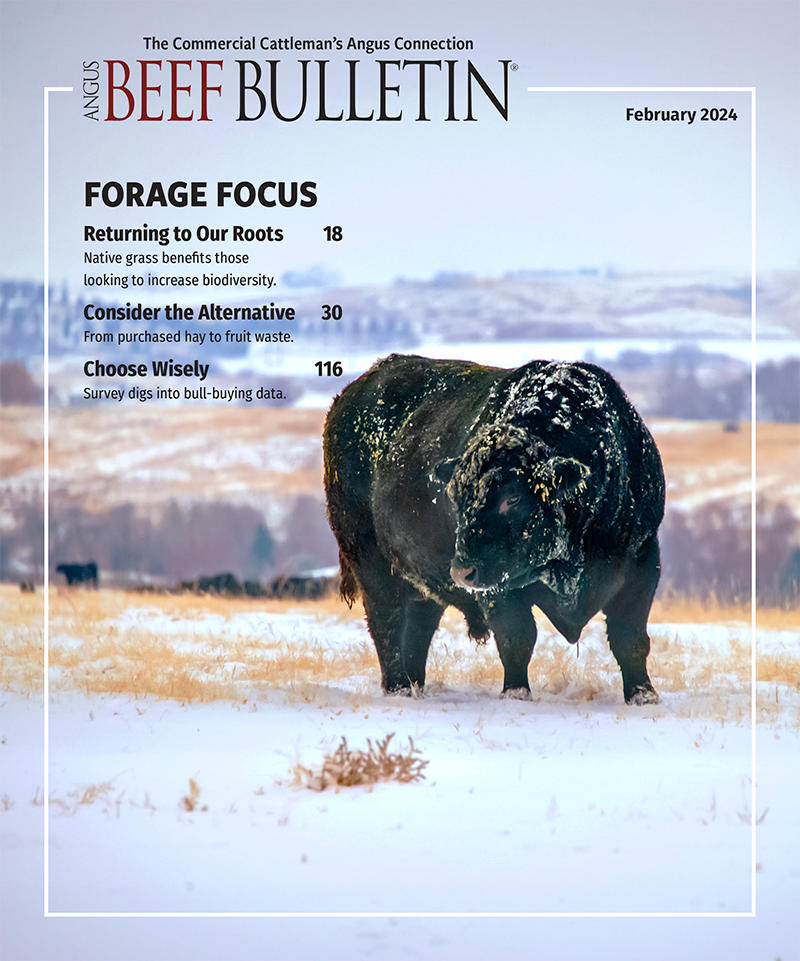
Identifying the Right Bull for Your Operation
Bull selection is not a “one size fits all” proposition.
I want to address some questions received in response to my two most recent Cow-calf Corner newsletter articles.
Q: What is considered a “good bull?”
A: The article outlined the following criteria to meet “good bull” status:
- A bull that sells with a registration paper that includes pedigree information and a complete set of genetic values [including expected progeny differences (EPDs) and bioeconomic indexes] to be considered in the selection process.
- A bull that has passed a breeding soundness exam (sometimes referred to as a BSE) and selling with a breeding soundness warranty (terms will vary).
In addition, it is important to identify the right bull for your operation. Bull selection is not a “one size fits all” proposition. Whether you are buying out of a live auction or by private treaty, it is critical to assess your own unique operation in order to determine the attributes your next bull needs to add value to the calf crop he will sire. This needs to be done before you go bull shopping.
There are approximately two dozen genetic values in most beef breeds available to consider. In reality, only a few can be prioritized when identifying your next herd sire. Selection pressure and your bull-buying budget are both precious commodities; don’t squander either on traits that are not economic priorities in your operation.
Do you intend to keep daughters to develop as herd replacements?
At this point in the cattle cycle, many producers will be retaining heifers to grow their cow herd. If this pertains to you, the maternal EPDs of your next herd sire will have a long-term economic effect on your operation.
- The heifer pregnancy (HP) EPD is a selection tool to improve fertility in your cow herd. Higher values indicate higher pregnancy rates in replacement heifers during their first breeding season.
- The calving ease maternal (CEM) EPD is a selection tool to increase the likelihood of unassisted births of the replacement heifers your next herd bull will sire.
- Milk EPDs indicate the milk level in the form of pounds of calf cows will wean based on the nutrition provided. Higher milk EPDs not only result in daughters weaning heavier calves, but also in higher nutritional requirements within the cow herd. Thus, there is an optimum value depending on your production environment.
- Mature weight (MW) EPDs predict the mature size of a bull’s daughters. Optimums in mature cow weight also depend on your production environment. Paul Beck’s article in the Jan. 29 Cow-calf Corner newsletter is an excellent summary of the effects of mature cow size. The Sire Search feature at www.angus.org indicates considerable variation in MW EPDs among sires combining better-than-average genetic values for calving ease direct (CED), weaning weight, yearling weight, HP, CEM, milk and marbling.
Will you be using your next bull on cows or virgin heifers?
No one wants to pull calves. That being said, there is an extremely low incidence of dystocia in mature cows. Selection for calving-ease bulls in the form of higher CED and low-birth-weight (BW) EPDs is a priority when bulls will be used on heifers.
Q: What else should be considered?
A: Consider …
- The marketing end point of your calf crop should influence selection priorities when bulls are used as terminal sires.
- Your existing cow herd. Breed composition, disposition and body type, mature size, percent calf crop weaned and percent of mature weight weaned all should affect what you prioritize in bull selection.
Summary
Every operation should establish a budget for herd sire purchases. The return on this genetic investment is based on identifying the right bull (or bulls) that offer the best fit for your operation. Over time, 80%-90% of genetic improvement is the result of sire selection. Herd bulls will either increase or restrict the profit potential of your operation.
For more information:
Johnson discusses the value of a good bull in 2024 on SunUp TV from Jan. 27, 2024. https://www.youtube.com/watch?v=dDOudyVPEgg.
Access information on purchasing bulls and bull fertility in the Webinars section of Angus University: https://www.angus.org/university/webinars.
Editor’s note: Mark Johnson is beef cattle breeding specialist for Oklahoma State University Extension. This article is reprinted with permission from the Feb. 5, 2024, OSU Cow-Calf Corner newsletter. [Lead photo by Shauna Hermel.]



